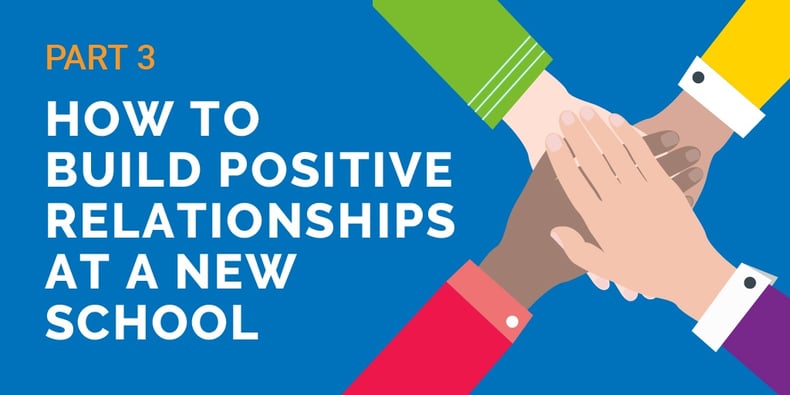
We’ve shared ideas with you covering how to transfer to a new job and get your new classroom set up, so what’s the next step? Now that the bulletin boards are complete and the nametags are on the desks, it’s time to think about building positive connections. I have witnessed more than one potentially great teacher fall victim to a lack of positive relationships within a school building. There is nothing more critical than connecting with others in a positive way.
Here are some ideas for not only who to connect with, but how to do it:
- Bond with the team: Whether it’s a high school science department or second grade team, find time to get to know the people you will be working with. If interacting socially outside of school is not something that has been the norm for this group in the past, maybe you are the person to start it. Being new has its advantage—it offers a freedom from knowing what has been done in the past. If you know it is good to build relationships as a team, then take the bull by the horns and initiate it. Also, don’t forget to invite special education staff to include them on the bonding time.
- Learn the expectations of the principal: Personally, I appreciate the question when teachers ask it of me. I think it shows a desire to work together and to make sure all bases are covered. Believe it or not, it may not be clear what the expectations are unless you ask. Think about covering all the areas of the classroom—expectations for how my classroom is set up, how students behave, when students should go to the office, getting help for students, communicating with parents, and most importantly, how to communicate effectively with the principal. As trust is being built early on in a new position, it is key to know how to communicate with the direct supervisor.
- Volunteer for a committee: I know another item on your plate is probably the last thing you need, but this is a great way to get involved in the school and the district.
- Coach a sport or sponsor an activity: I have never been involved in a district that wasn’t short on coaches or sponsors in some areas. Often times, athletic directors don’t need an expert in volleyball or soccer—they just need someone who can manage students and connect with them. If you aren’t experienced in the areas available, think about taking on an assistant role so you can learn the strategy from the head coach. Again, don’t spread yourself too thin, but this should be something that is considered.
- Meet and connect with support staff: This can be hard if it doesn’t happen before the school year starts. With paras and aides in the classroom—usually when students are in the room—it can be hard to make strong connections with them. Try to ask about family and get to know them prior to the year starting. At times, these are adults you spend most of your day with. It is critical to get a good start with them so they feel as though you care about them on an individual level.
- Systematically plan for positive parent communication: This can be done pretty early on and even during the summer before you know who your students are. I have seen teachers send out a welcome letter to introduce themselves, postcards with some brief highlights about the new teacher, and even a “get to know me” bulletin board displayed at the open house for parents to see. Following the start of the year, I encourage teachers to make positive contact with the parents within the first two weeks. It is easier to make a difficult call later in the year if some positive calls have already been made.
- Contact your students early: In my school, class lists are not available until a few weeks prior to the school year starting. Even so, teachers can have their welcome postcards to students ready to go. Students generally love receiving mail, and this is a great way to get them excited about the school year. It is also good to highlight some of the learning that you plan to emphasize in the classroom throughout the year—parents will see this and it will engage them as well. If it isn’t possible to get something out before the start of the year, another good idea is to leave a note on their desk at the open house or even on the first day of school. Anything that communicates to the student, “I’m excited you are in my class!” sends a message of a positive learning community.
This list is long and probably isn’t all inclusive, but it can be a good place to start to get rolling on a positive school year. Strong relationships with students, parents, support staff, and fellow teachers is a critical component to having a great first year in your new school.
Looking to make even more positive relationships both inside and outside your school? Take a look at MimioConnect—our online educator community—where you can access interactive lessons and connect with other educators.


